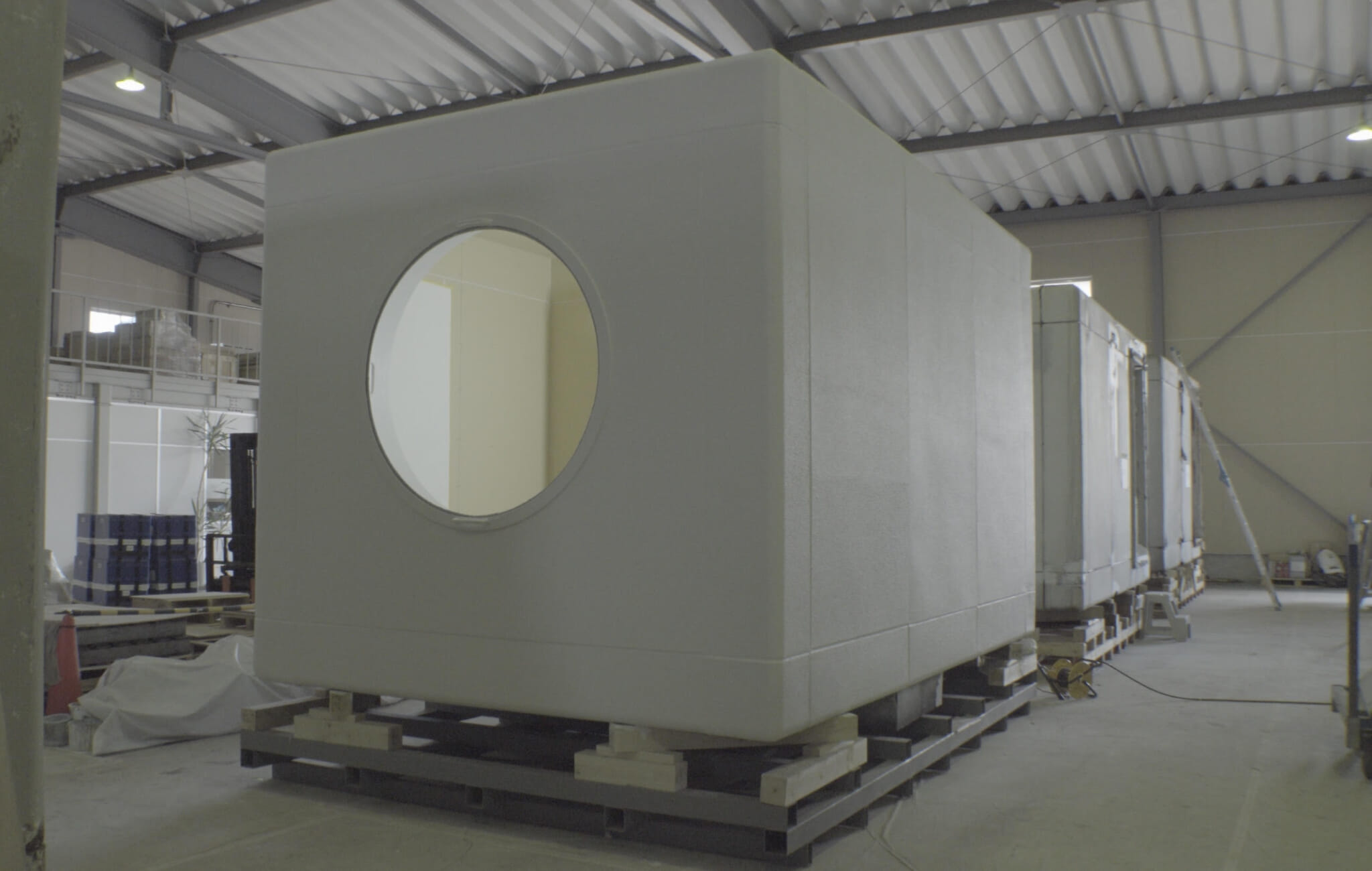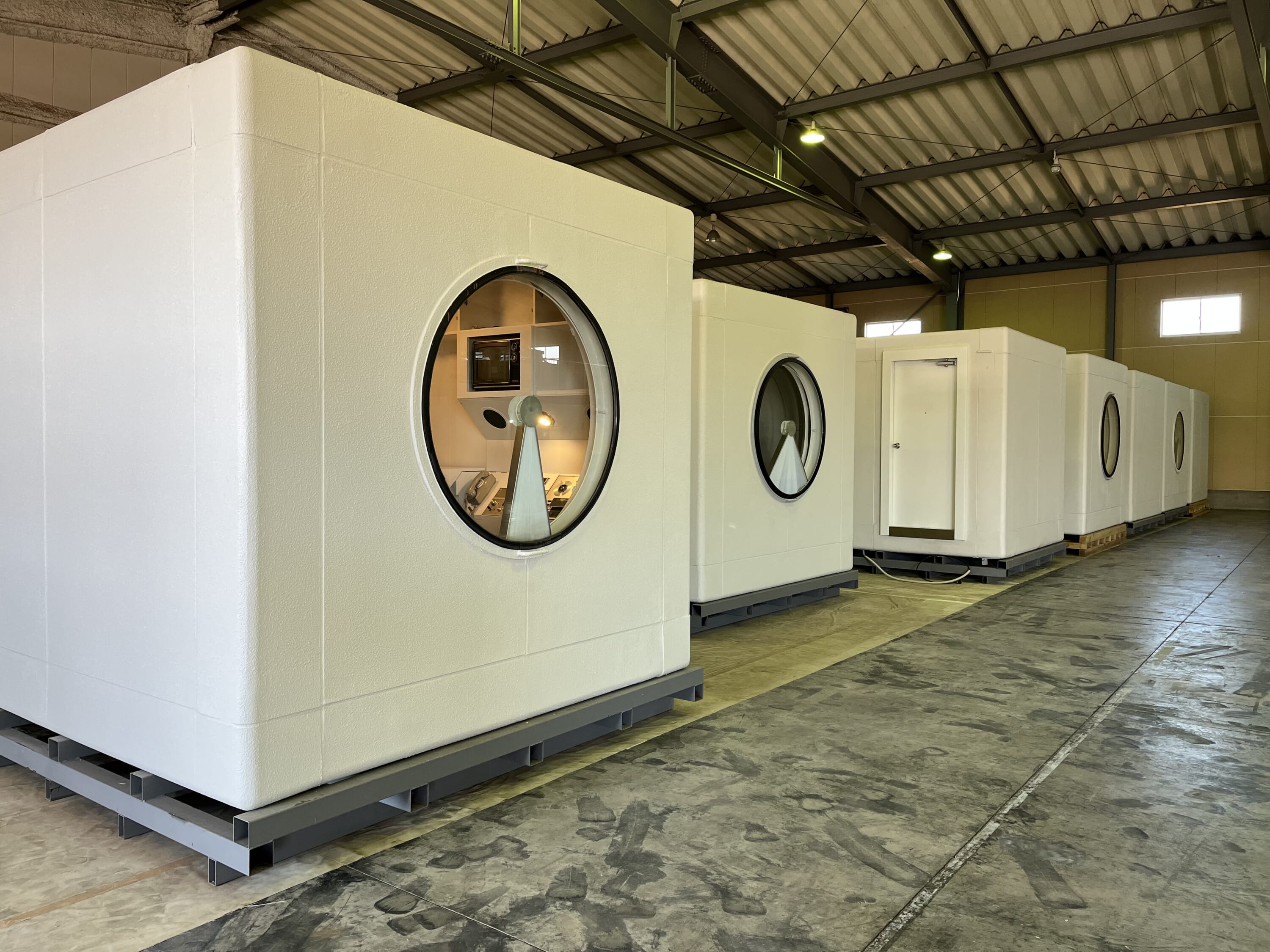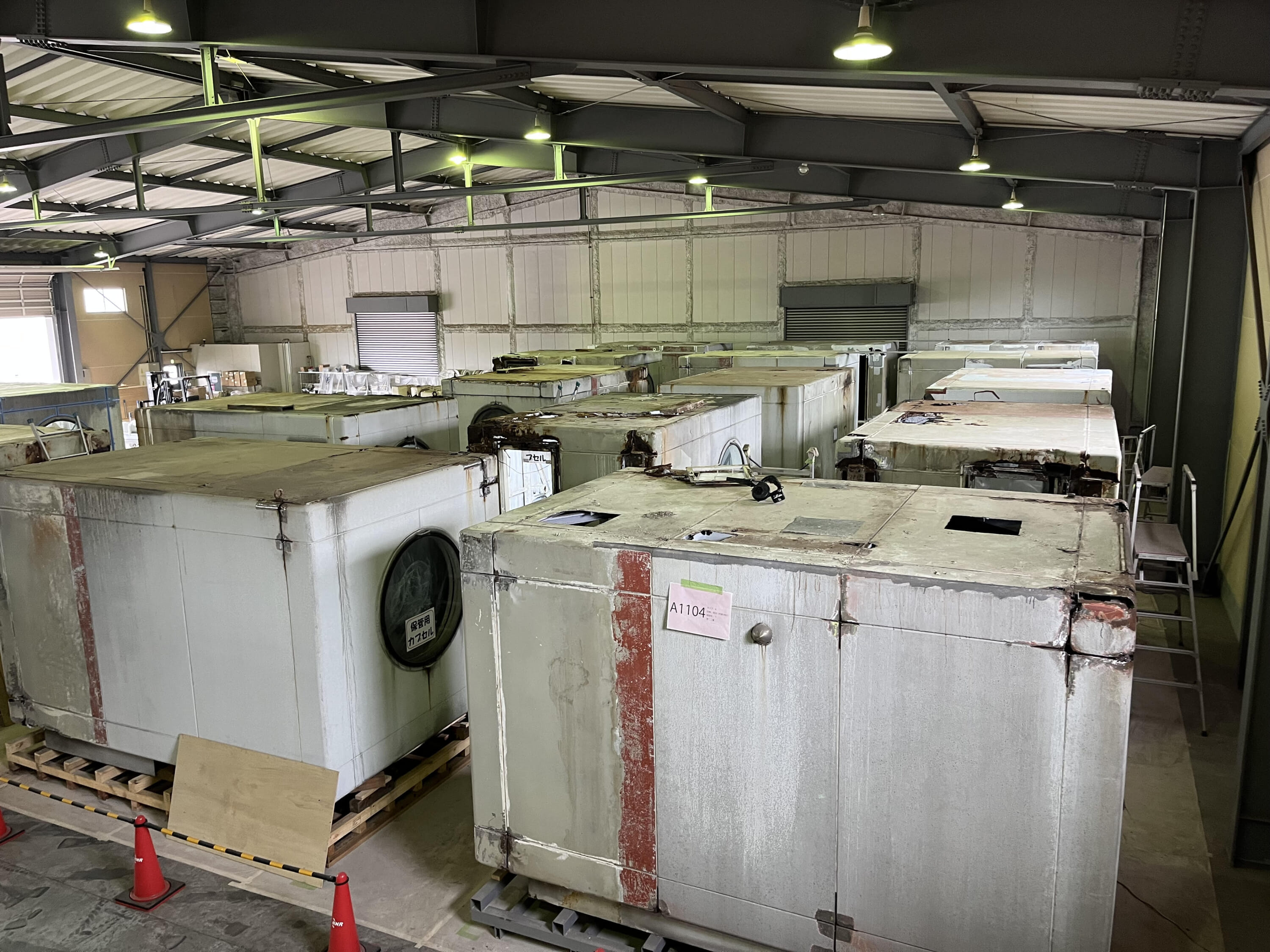Dreamed up by architect Kisho Kurokawa, the Nakagin Capsule Tower in Tokyo existed in our reality for exactly half a century. Deconstructed (some would say demolished) and removed from its location in April 2022, it’s now relegated back to the dream realm, filed under “nostalgia.” It will remain, however, in the annals of history as the first specimen of capsule architecture in the world built for use and one of the finest examples of metabolist architecture.
The building, however, was never meant to stay unchanged. Kurokawa envisioned it as a structure in flux and had planned for the capsules — of which there were 140 — to be replaced every 25 years. This is in line with the metabolist philosophy of seeing buildings as living organisms in a living city, with aging and death a part of life.
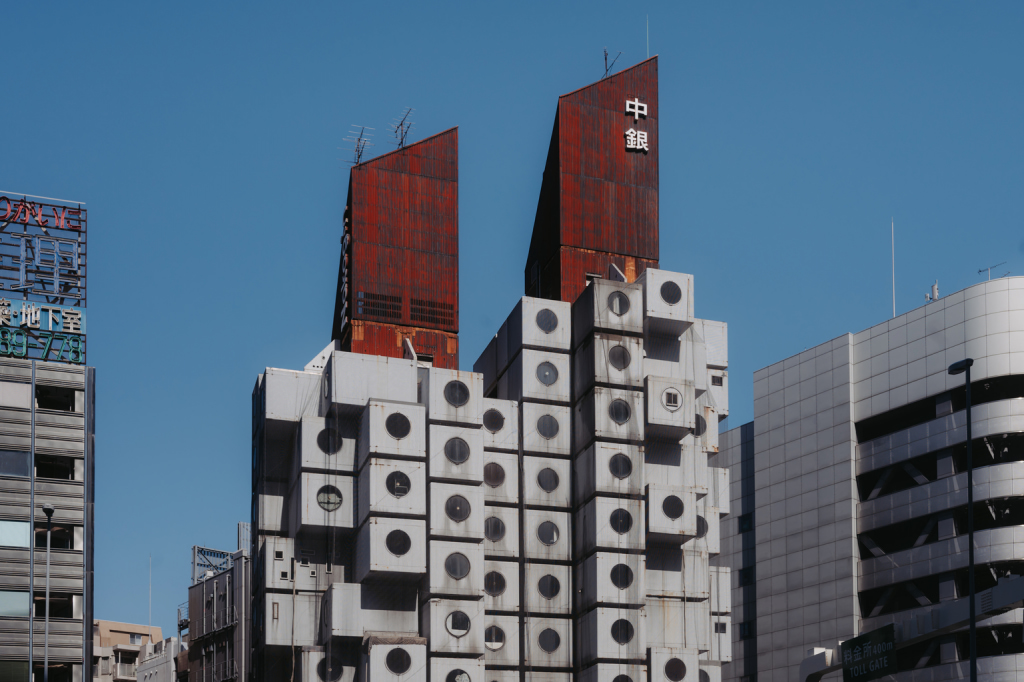
Photo by Lisa Knight
Revitalized Capsules
The capsules were never replaced, and the building fell into disrepair, prompting the creation of the Nakagin Capsule Tower Preservation and Restoration Project. Though initially established with the aim of stopping the building’s demolition, the project eventually shifted its goal to preserving the 23 capsules it owned. Tatsuyuki Maeda, head of the project, commenced renovation and preservation work on some of the capsules before Nakagin was set to be dismantled, demonstrating how capsule life spans could be extended. These revitalized capsules were shown off during tours of the building led by Showcase Tokyo Architecture Tours.
As soon as the tower’s deconstruction was confirmed, the Nakagin Capsule Tower Preservation and Restoration Project received hundreds of inquiries from art museums and architects around the globe. The intense interest catalyzed efforts to restore and repurpose individual capsules and resulted in the careful dismantling and transportation to a recycling plant in Chiba Prefecture of the project’s 23 capsules in the summer of 2022. There, refurbishing work under the supervision of Kisho Kurokawa Architects & Associates, as well as Isetan Mitsukoshi Property Design, started.
Maeda shared how happy he was to be salvaging the capsules and giving them a new life with the Asahi Shimbun in January 2023, saying, “I think Kurokawa would have wanted to see the capsules reborn, responding to the changing times.”
At the time, however, Maeda didn’t disclose many details as to where the capsules were going. Symbolically, the first concrete information was announced in April 2023, a year after Nakagin’s deconstruction. In a recent brief exchange with Tokyo Weekender, Maeda said, “The 23 capsules will now travel the world. Please look forward to it.”
At the time of writing, there have been four major updates about the destiny of the restored Nakagin capsules — and some are doing considerably more traveling than others.
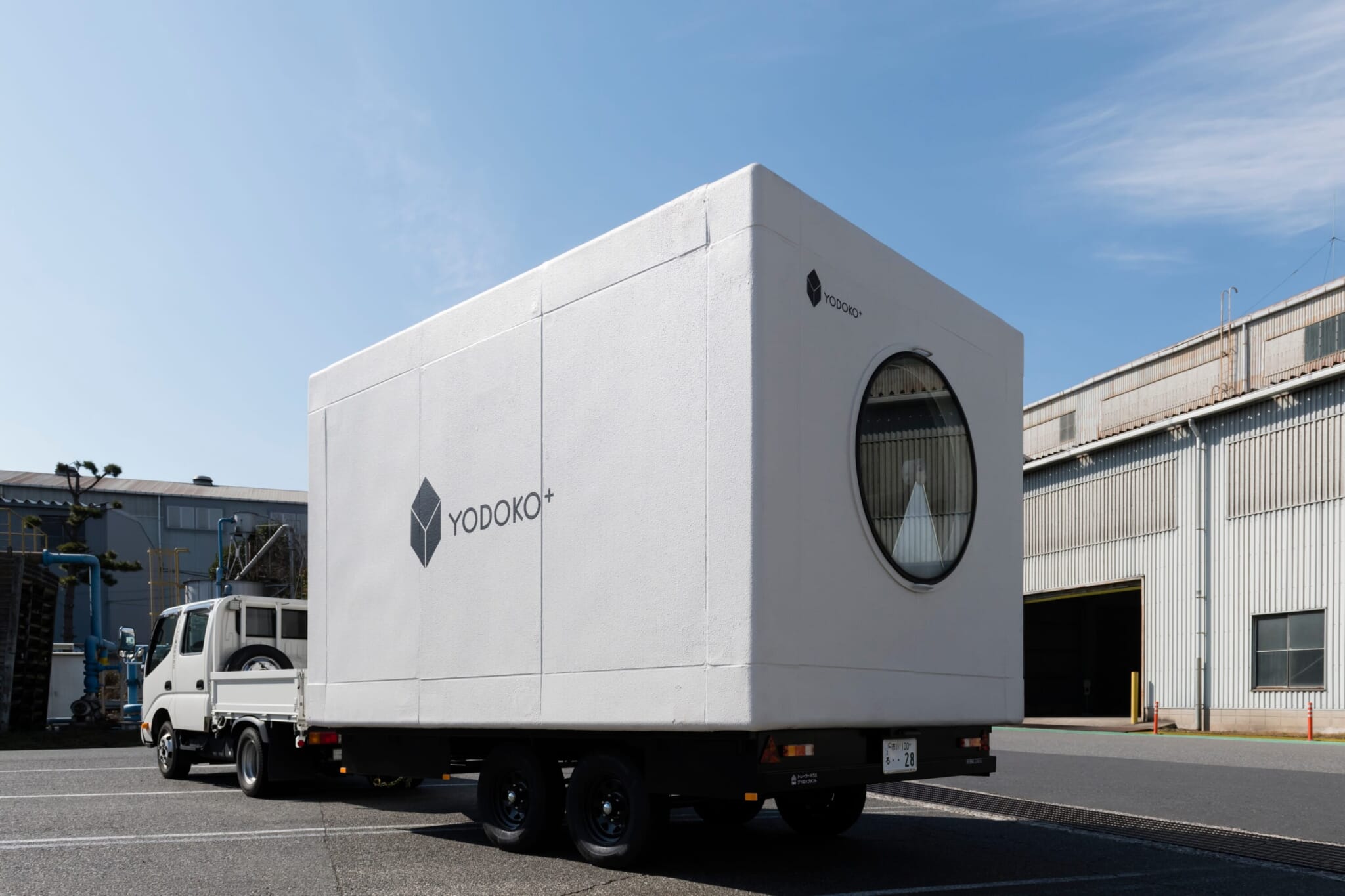
Capsule on Wheels
It was expected that refurbished capsules would differ in style and purpose, but for one to become a vehicle came as a surprise to many. It’s a solution closer to the creative photo shoots of Nakagin and the fiction written about it where it’s playfully imagined as a submarine, a satellite or a spaceship. For the Kurokawa experts, though, this isn’t a random idea at all. The architect wrote about Homo movens, meaning “human on the move,” in his Capsule Manifesto of 1969. He believed that architecture should be more mobile to keep up with humans.
In April of this year, the Yodogawa Steel Works company announced that one Nakagin capsule had been converted into a trailer truck to serve as a symbol for its Yodoko+ brand. The capsule, which met all requirements to become a trailer and is properly registered, is already on the move, having been exhibited at the Tokyo Trailer House Show 2023 in May, as well as at fairs in Nagoya and Osaka.
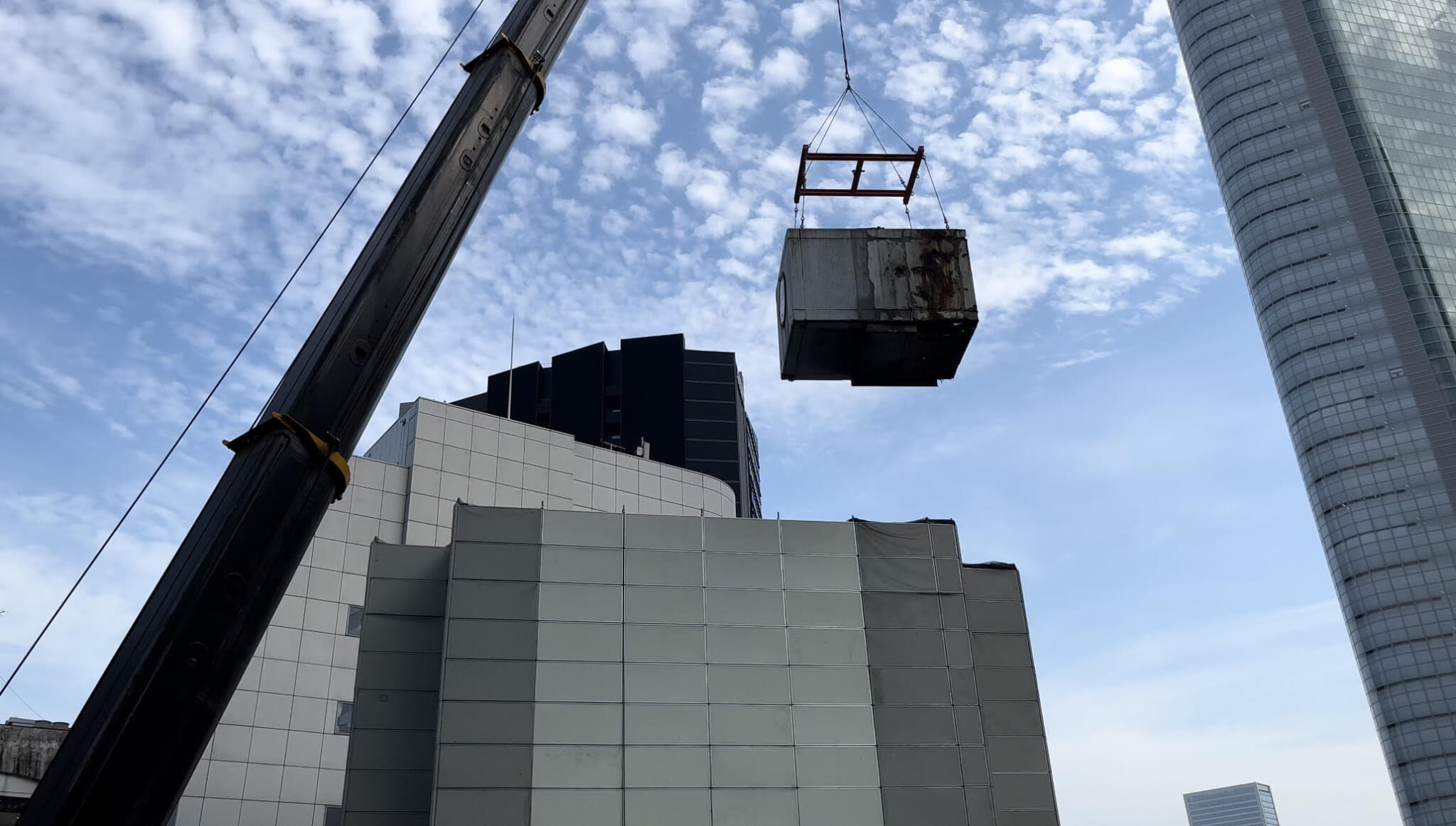
A photo from Nakagin’s deconstruction
Capsules in Museums
As a piece of architectural history, Nakagin was expected to have some presence in museums. In May of this year, it was announced that the San Francisco Museum of Modern Art (SFMOMA) would be the first museum to acquire a renovated capsule.
SFMOMA’s capsule was once owned by Kurokawa himself and had a prime location on Nakagin’s highest floor. The museum’s press release states that it was even featured in several movies. Faithfully restored to contain all the original features, the capsule now sits in great company with SFMOMA’s other displays of Japanese architecture, design and photography. The museum also acquired nine photographs by Noritaka Minami documenting the interiors of Nakagin between 2010 and 2022.
A few months later, on August 24, 2023, The Museum of Modern Art, Wakayama, announced that it had received a Nakagin capsule and would put it on display. At the time of writing, only the exterior is on view, with plans to open the interior at a later time.
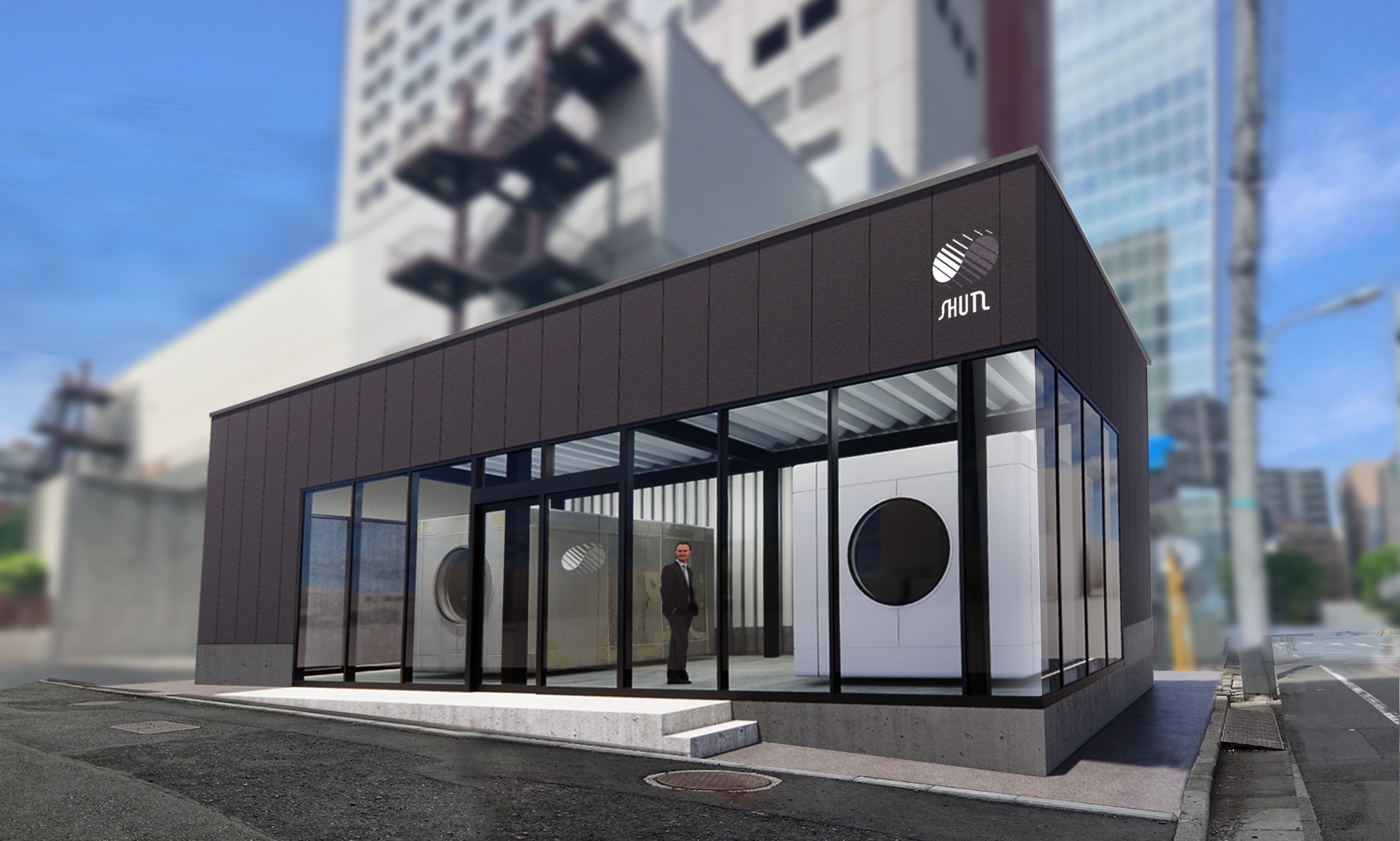
Shutl Gallery
Capsules Back in Ginza
Tokyoites needn’t go to San Francisco or keep their eyes peeled on Japan’s highways to catch sight of one of the Nakagin capsules: Not one but two capsules will open to the public in October 2023 — and they’ll sit just a 10-minute walk from the building’s original location.
Acquired by the Shochiku Corporation, a company committed to the transmission and development of Japanese culture, the two capsules will form part of Shutl, a gallery intended for contemporary art exhibitions and events.
One capsule has been faithfully restored, while the other has been stripped down to its skeleton, creating two distinct spaces. The gallery’s first exhibition is set to open on October 13. Appropriately dedicated to metabolism, it will feature poet Tahi Saihate and artists Shun Sasaki, Shoei Matsuda (also known as Masahide Matsuda) and Ryu Mieno.
カプセルハウスK(1973年竣工)
黒川紀章の別荘
中に茶室もあるんですよ! pic.twitter.com/cAiU76SSa0— 和田菜穂子 (@nahokowada) February 17, 2022
Fun Fact: Nakagin’s Little Sibling in Nagano
Hidden in lush foliage, Capsule House K stands alone in a forest in Karuizawa, Nagano Prefecture. The structure, which resembles a mini-Nakagin, was built by Kurokawa in 1973, a year after Nakagin was completed. It has one base and four capsules — two bedrooms, a kitchen and a tea ceremony room. Though neglected for some time, it was purchased by Kurokawa’s son, Mikio Kurokawa, in 2019 and is now living a new life as a rental property.
You can make a reservation to stay there at miraikurokawa.jp.
Read more on Nakagin and Japanese architecture:
- Tokyo Buildings That Nakagin Fans Will Love
- Metabolism: The Unrealized Future of Japanese Architecture
- A Casualty of Capitalism: Nakano Sun Plaza
This article was originally published in the TW September-October 2023 issue

